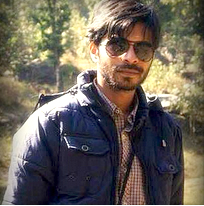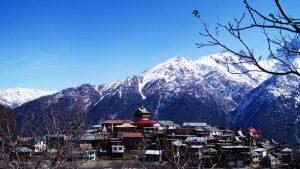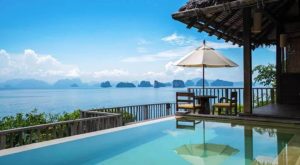Last Updated: October 5, 2019 Swairik Das
The Indian Himalayan region remains a special attraction because of its vast and diverse landscape that is bedded with a sprawling biosphere and dotted with numerous glaciers and lakes. Further, the presence of a number of endangered wildlife species marks it as a significant place for explorers. But if you are seeking to explore the Indian Himalayan region more deeply and capture the remote and distinct culture, the festivals of the Indo – Tibetans and various tribes will definitely frame an indigenous picture. Here is a comprehensive list of festivals in the Indian Himalayan region that may reverberate in your mind and ultimately bring you to a unique vacation in the mountains.
Hemis Festival, Ladakh region
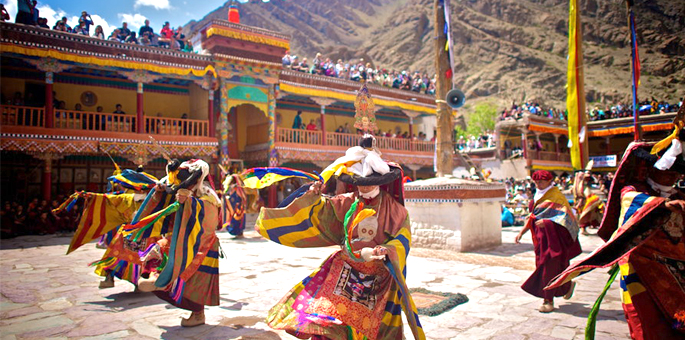
Celebrated with great zest, Hemis Festival is a two day gala affair held in June or July every year at the Hemis Monastery (a.k.a. Hemis Jangchub Choling), and is one of the popular festivals in the Ladakh region. Dedicated to Lord Padmasambhava, who founded Tantric Buddhism in Tibet, the Hemis Festival comprises a mystic and colourful Masked Dance performance that depicts the triumph of good over evil. With colorful masks, outer costumes and fusion of sounds of cymbals, drums, and cumbrous trumpets the Hemis Festival brings forth a very indigenous, eccentric and luxurious atmosphere amid the pinpricks of dust.
Naro Nasjal Festival, Ladakh region
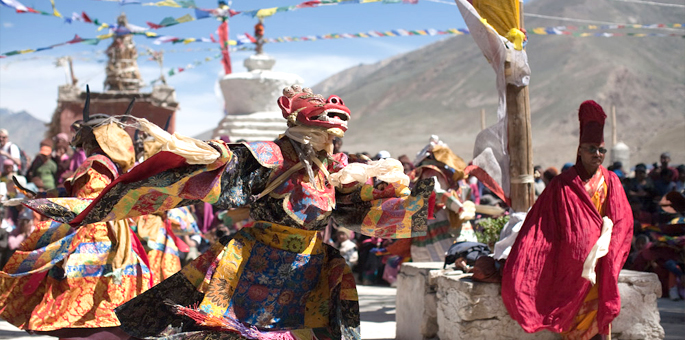
The Black Hat Dance remains the major attraction during the Naro Nasjal Festival, which takes place in August during the blooming of the Guru Neropa flower and held every year at the Sani Monastery in Zanskar, belonging to the Drukpa Kargyu school of Tibetan Buddhism. Besides unveiling the statue of Naropa… during this festival the Lamas from Bardan Monastery perform masked dances as ritual offering, symbolizing the struggle and conquest of good over evil. Although located in a remote region, 6 kms from Padum, the Sani Monastery, which is close to the picturesque Sani Village and approximately 12 hours of drive from Leh, is definitely worth a visit.
Kalachakra Festival, Ladakh region and Sikkim
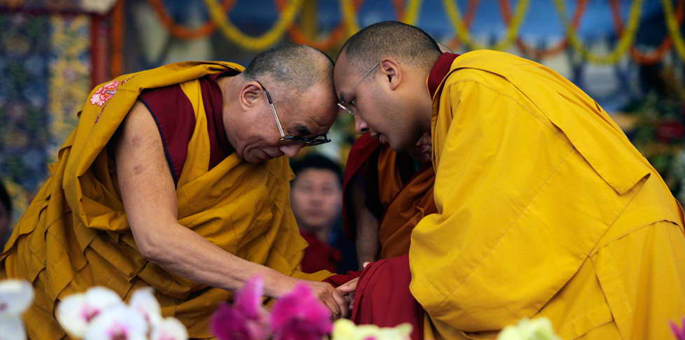
The Kalachakra Festival, which takes place in July, represents the complex teachings, philosophies and practices in Tibetan Buddhism. It portrays the Kalachakra Tantra within the Tantric Buddhism that revolves around the astrological concept of time and cycles, leading to the path of enlightenment. The Kalachakra deity of Vajrayana Buddhism, which sits right in the center of Mandala (that encircles individual & world peace and physical balance), symbolizes Buddha and is believed to know all. During the Kalachakra Festival, the Dalai Lama addresses his devotees and the monks of Namgyal Monastery conduct various performances including the Kalachakra Ritual Dance.
Khangchendzonga Tourist festival, Sikkim
One of the popular festivals that have encouraged tourism in Sikkim is the Khangchendzonga Tourist Festival, which takes place in Pelling from December 24 to 26. The joyful occasion involves events like white-water rafting, kayaking, trekking and mountain biking. Further, the festival also aims at promoting eco-tourism through flower exhibitions and also brings you closer to the cultural diorama by displaying traditional crafts and costumes. Nonetheless… you can also try out various ethnic foods that include momos, thukpa and kinema.
Darjeeling Carnival, North Bengal region
If you are seeking to dig into the rich and diverse culture of the ravine folk of the Mahabharata Range… then plan a holiday to Darjeeling during the Darjeeling Carnival that takes place in the mist of November. The affair continues for 10 days and includes events like poetry-reading sessions, painting and photo exhibitions, tea-drinking ceremonies, Land Rover rally, music concerts and ethnic food festivals. Further, the rendezvous of music like jazz and rock unites the youth and travellers from different part of the world. The Darjeeling Carnival was started as an initiation to get over the violent agitation in the eighties amongst the youth of Darjeeling.
Dosmoche Festival, Ladakh region
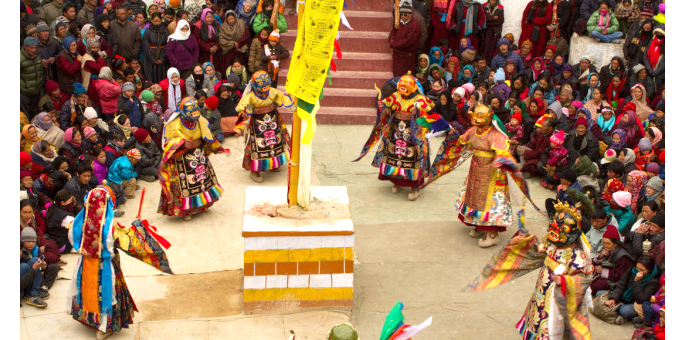
Another popular festival in the Ladakh region is the Dosmoche Festival that is celebrated in February with great pomp and fervor at the Leh Palace, Likir Monastery and Deskit Monastery. During this festival the courtyards of the respective monasteries burst out with dance – drama performance, which is an amalgam of the fusion of drums and trumpets, and thumping steps of the masked Lamas. It is one of the traditional festivals of the Indo–Tibetans that continues for two days and was started by a king named Lhachen Gongdup who ruled the region between the years 1295 and 1320. With a view to purge and purify the town, a number of rituals are undertaken that include stroma offering and dough-made ritual figures. The stroma and figures are either burnt or left deep in the desert to shoo the evil spirits of the last year away.
Losar Festival: Ladakh region, Himachal Pradesh, Sikkim and Arunachal Pradesh
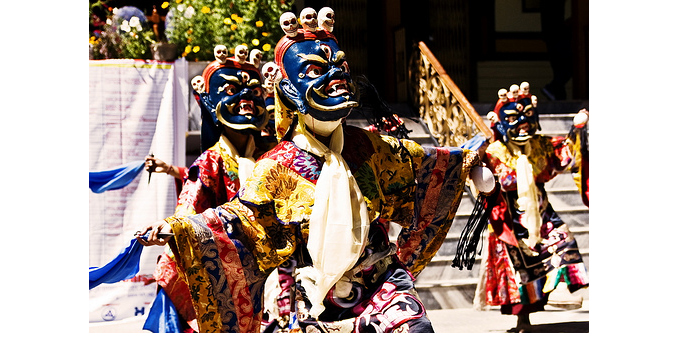
A perfect time when you can try out one of the local beverages of India, Chang or Chhaang, is during the Losar Festival, which is a vibrant festive affair in the Indian Himalayan region that stretches for 15 days in late January or February, according to the Tibetan calendar. The festival represents the Tibetan New Year and is characterized by mask dance performance, music and sumptuous delicacies like soups served with dumplings and guthuk (type of noodle). Further, one can also witness the colourful atmosphere of the locals in their traditional attire and can also participate in the gala affair by setting off firecrackers and trying out kapse, which is a kind of cake served during dinner.
Phyang Festival, Ladakh region
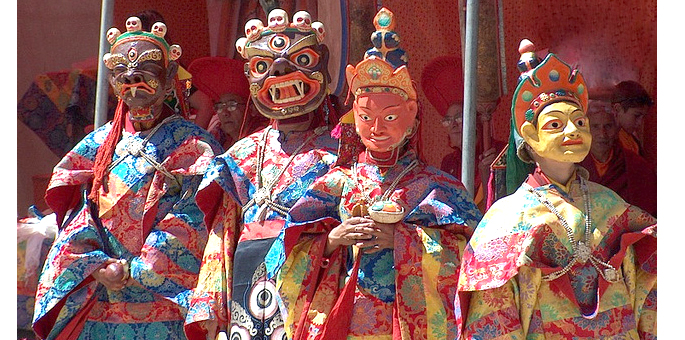
The sacred dance dramas (a.k.a. Chhams) of the Lamas and musical intonation echoing the walls of the Phyang Gompa… is the major attraction during the Phyang Festival that takes place in July. Besides the dance drama performance, the worship of the Thankha of Jigten Gombo and the exhibition that displays numerous Buddhist articles, chortens and statues also attracts travellers during the Phyang Festival. Home to 50 monks, the Phyang Gompa was founded by Lama Chosje Danma Kunga Dagspa under the sponsorship of King Tashi Namgyaland and belongs to the Degungpa order. It is approximately 16 kilometers drive from Leh.
Ladakh Harvest Festival, Ladakh region
Out of all the festivals that signify the ritual clamour, the Ladakh Harvest Festival is amongst the prominent ones and is celebrated with colours, pomp and zest. It is 15 days of extravaganza that welcomes the crop yielding season with mask dance performance, music and theatre shows. The festival gets rolling from the Leh market with a vibrant procession to the Polo ground and is participated by several cultural troupes and villagers in their ceremonial attire. Besides the usual dance – drama performances, a few sporting events such as a Polo tournament – “Ladakh Festival Cup” and Archery captures the tourist’s interest.
Tak – Tok Festival, Ladakh region
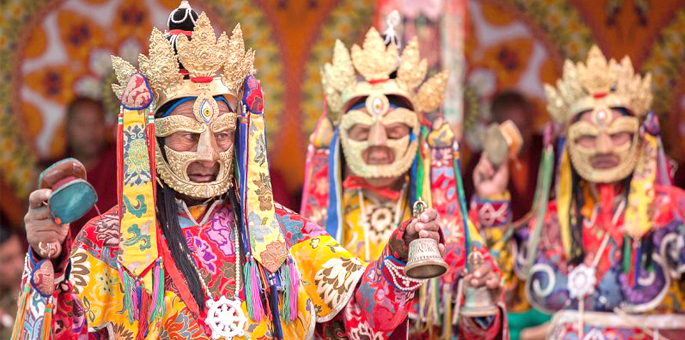
Just after the Phyang Festival, the fanfare awaits the Tak – Tok Festival at the cave Gompa of Tak – Tok. It is a summer festival and one of the important festivals in the Ladakh region that continues for 10 days. The festival dilates the unique ritual performances including mask dance, music and chants. Founded in the mid 16th century during the reign of Tshewang Namgyal and located in Sakti village, which is approximately 46 kilometers from Leh, the Tak – Tok Gompa is home to 55 lamas and the only Nyingma monastery in Ladakh.
Sindhu Darshan Festival, Ladakh region
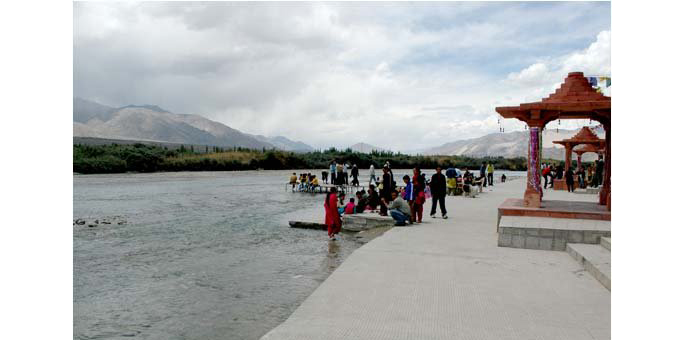
The three day gala affair during the Sindhu Darshan Festival is a rendezvous of various religious groups on the banks of River Indus (Sindhu) that started in the year 1997. The festival revolves around the importance of Sindhu River; the people of the region consider it as a representation of its multi-dimensional culture, communal harmony and peaceful co-existence. It also commemorates the brave soldiers of India who valorously fought against the odds at the Sino – Indian War 1962; Indo – Pakistani War 1948, 1965 and 1971; and Kargil War 1999. The Sindhu Darshan Festival, which takes place in May – June, starts with the Sindhu Yatra from the sacred Mansarovar lake, the source of Indus River, and it also witnesses pilgrims bringing water from the other holy rivers in the country in earthen pots and immerse these pots in the Sindhu river, thereby mingling the river water with other waters of the land.
Urs, Kashmir region
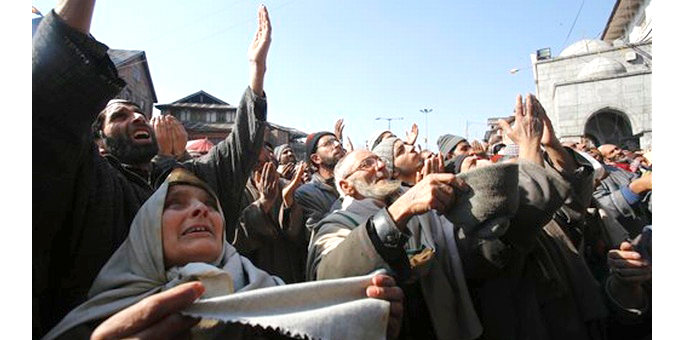
There is a saying, “It snows when the Urs of Meesha Sahib is held, it is windy when the Urs of Batamol Sahib takes place, it rains on the occasion of the Urs of Bahauddin”. Urs, also dubbed as Ziarats, is an annual 11 day extravaganza that is held at the shrines of Muslim saints on their death anniversaries. The death of a Sufi saint, which is considered as the union with the beloved, (locally known as wisaal) is celebrated as a wedding anniversary. During the festival thousands of devotees throng the shrines and pray as the priest exposes a relic of the Sufi Saint. Nonetheless… it is the perfect time to understand the cultural significance and get on with Qawwali- a form of Sufi devotional music.
Vaitha Vatur Truvah, Kashmir region
The festival of Vaitha Vatur Truvah is held on the 13th day of the lunar fortnight of Bhadon, mostly in August or September, at an ancient temple in Verinag (source of the Jhelum River), which is at an elevation of 1,851 meters. The festival witnesses several Hindu pilgrims and is followed by a big Havana.
Khichri (Khichdi) Amavasya, Kashmir region
One of the prominent Kashmiri Pandit festivals is the Khichdi Amavasya that is celebrated in December or January. The festival revolves around the belief that ‘Yakshas’ (male guardian spirit appointed by Lord Indra) used to inhabit the region and thus the Hindus prepare Khichdi and offer it to “Yakshas”. According to Hindu myths, Yakshas signify prosperity and fertility and is also referred as Semi God.
Herat, Kashmir region
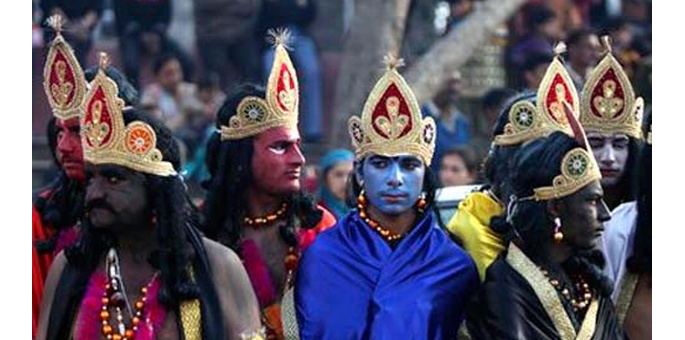
One of the popular festivals in the Kashmir region, Herat OR commonly known as Shivratri is a major festival among the Kashmiri Pundits and generally falls in February or March. During the festival the Hindus clean their houses and women pay a visit to their parents. Further, you can even witness several ritualistic practices that start three days prior to Shivratri. The festival is dedicated to Lord Shiva and it is believed that Shiva and Parvati wedded on the day of Shivratri.
Chet Festival, Himachal Pradesh
Mainly held in the districts of Bilaspur, Hamirpur and Kangra… the Chet festival is one of the important festivals in Himachal Pradesh that is celebrated with happiness and prosperity. It is also referred to as Chatarli in Kullu and Dholru in Bharmour. The festival takes place in the first month of the lunar year OR in April.
Haryali, Himachal Pradesh
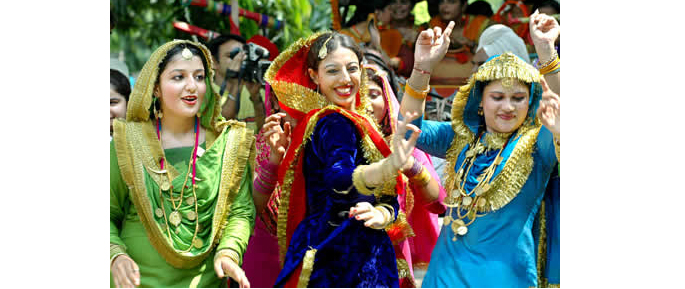
One of the monsoon festivals in Himachal Pradesh that is usually celebrated in July is the Haryali festival. It signifies the arrival of the rainy season every year. It is also referred as Teej in the plains, Rhyali in the upper hills of Shimla district, Dakhram in Kinnaur and Jubbal and Shegtsum in the Lahaul valley. During this festival women burst out with colourful ethnic wears and apply mehndi designs on their hands with.
Chrewal, Himachal Pradesh
Also known as Prithvi puja, Chrewal is another prominent festival in Himachal Pradesh that is celebrated in the month of August and continues for a month. During this festival devotees come for pilgrimage to the sacred Manimahesh Lake. The festival is also observed to destroy the insects which attack the crops and fruits during the rainy season. Chrewal, also referred to as the festival of fire, follows a small ritual… where locals worship the ‘Chira’ (a small circular piece of earth that is led by turf grass and flowers) by burning incense and offering fruits.
Jagra, Himachal Pradesh
One of the local festivals of Himachal Pradesh, Jagra is usually celebrated in the month of September with several ritual activities like fasting followed by offering prayer to a village deity. Further, folk dance and music and bonfires are also a part of the Jagra festival.
Nawala, Himachal Pradesh
One of the festivals that are celebrated by the Gaddi tribes of Kangra, Chamba and Mandi districts… is the Nawala festival. Though there is no particular day on which Nawala is celebrated but it is an annual festival that is dedicated to Lord Shiva. The devotional songs praising Lord Shiva is sung the whole night during this festival.
Kullu Dussehra, Himachal Pradesh
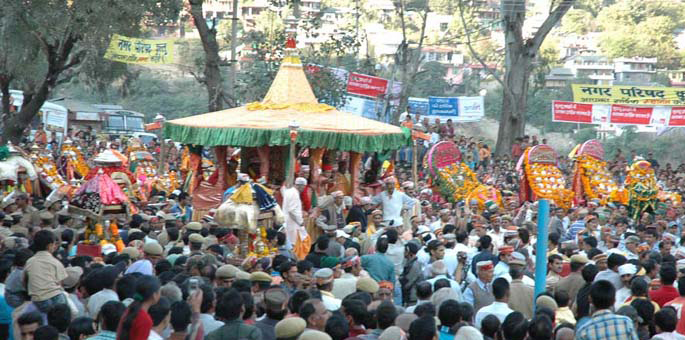
An off-shoot of the national Navratri festival, the Kullu Dussehra festival in Himachal Pradesh is a weeklong international level fair that is held every year in October. Dedicated to Lord Raghunath, who is believed to be the ruling deity of the Valley, the Kullu Dussehra festival follows a huge assembly of other local deities and is worshipped by pilgrims coming from different parts of the country. The lively cultural diorama is a major attraction for both the domestic and international tourist. During this festival one can even witness several cultural programmes and exhibitions displaying the traditional art and attire of the Himachalis.
Saga Dawa, Sikkim
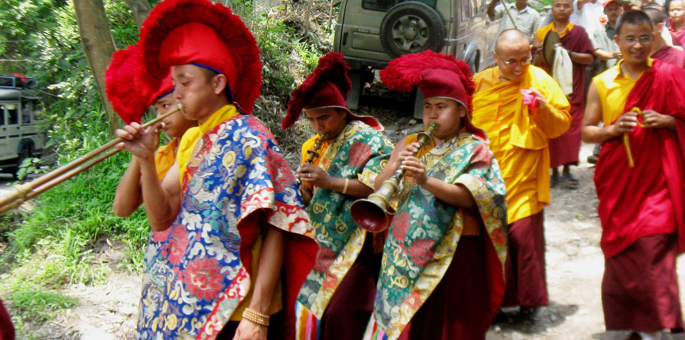
One of the extremely reverenced Buddhist festivals in the Indian Himalayan region is the Saga Dawa festival that takes place on the auspicious day of Buddha Jayanti. It is celebrated to commemorate the birth anniversary of Lord Gautam Buddha. During this festival religious practices are manifolded and many forgo for profound contemplation and perform prostrations around monasteries. The Saga Dawa festival reflects the life of Lord Buddha from his birth, to how he earned enlightenment and salvation from this world.
Drupka Teshi, Sikkim
Another festival that is dedicated to Lord Buddha is the Drupka Teshi festival that signifies the preaching of four Noble Truths by Lord Buddha to his disciples. This festival is celebrated on the fourth day of the 6th month of the Tibetan calendar (usually that falls on July or August). Held in Gangtok at the Deer Park where Lord Buddha addressed the disciples and delivered his sermon… the Drupka Teshi festivals follows the first Noble Truth i.e. the noble truth of suffering, secondly the truth of the origin of suffering of Karma and delusion and their causes, thirdly the attainment of Nirvana and lastly the eight fold path leading to Nirvana.
Phang Lhabsol, Sikkim
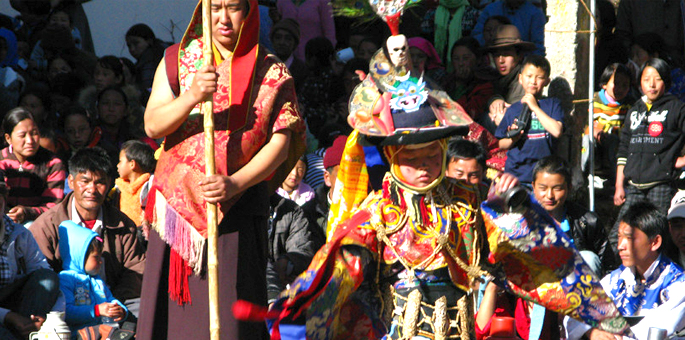
Dedicated to Mount Khangchendzonga, the guardian deity of Sikkim, and to Yabdu, the supreme commander of Mount Khangchendzonga, the Phang Lhabsol festival takes place in the compound of the Tsuklakhang monastery in the month of September every year. Various ritual and dance performances like… red mask dance and black mask dance are the major tourist attractions. Further, the traditional attire (ancient uniform of battle) with helmets decorated with flags, bracelets, boots, swords, shields and daggers give a unique feel to the Phang Lhabsol festival.
Bumchu, Sikkim
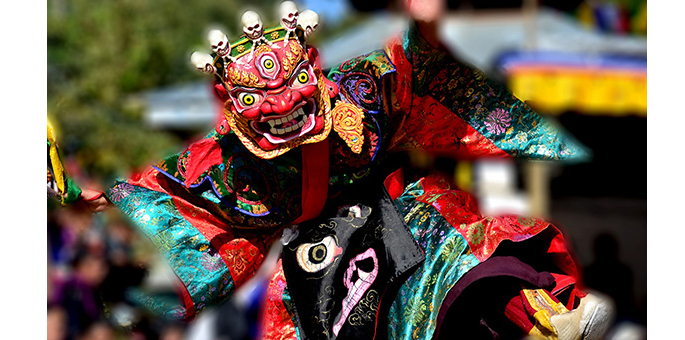
Yet another religious festival in Sikkim is the Bumchu festival and it is considered as a sacred water festival… when the Lamas of Tashiding Monastery open the pot containing holy water. The level of water is believed to be a prediction for the forthcoming year. If the water is filled up to the top edge of the vessel, it predicts a year of peace and prosperity. If the water is overflows then that signifies a year with natural disaster and disturbances. When the water level is low or almost dry it is a sign famine. Nonetheless, a part of the holy water is distributed amongst the devotes and the pot is replenished with river water and sealed at the end of the festival that is to be opened only during the next Bumchu festival.
Lhabab Dhuechen, Sikkim
Held in the month of November, the Lhabab Dhuechen festival is one of the popular festivals celebrated in Sikkim. The festival draws the day when Lord Buddha stepped on the world from heaven upon the request of his devotees. The Buddhists people of Sikkim celebrate this day with all festivity and gaiety.
Lasoong, Sikkim
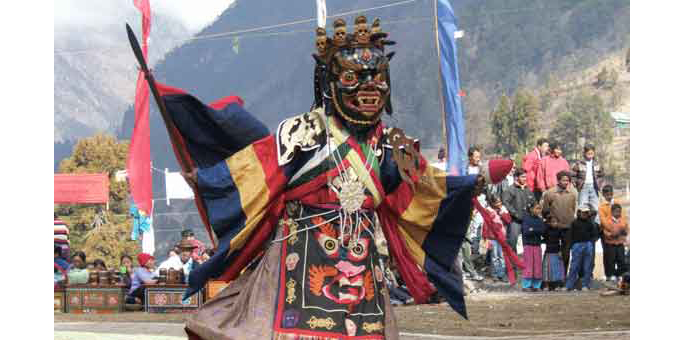
Also dubbed as “Sonam Losar”, Losoong is the Sikkimese New Year that brings forth the farmers to rejoice and celebrate the harvesting season. Celebrated at the end of the 10th month of lunar calendar, the festival displays a traditional aroma to thank for the good harvest and to offer prayers for even better yield in the next season. Although Losoong is celebrated privately among family members and friends, there is an air of festivity and the youth all over Sikkim have archery competitions. During this festival you can even experience the Chaam (masked) dancing at Tsu-La-Khang Palace temple,in Phodong and in Rumtek.
Dasain, Sikkim
Dasain is another most festival in Sikkim that brings the festive mood of the Nepalese Hindu of Sikkim. The festival signifies the victory of good over evil, when Goddess Durga defeated evil Mahisura. This fortnight-long festival celebrates different days as Fulpati, Maha Astami, Kala Ratri, Navami and Vijay Dashmi. Vijay Dashmi also marks the victory of Lord Rama over Ravana.
Tendong Lho Rum Faat, Sikkim
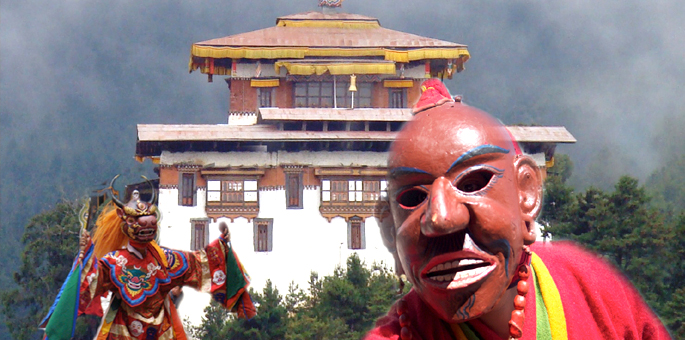
Tendong Lho Rum Faat, usually held in August, is one of the oldest festivals in Sikkim that is largely celebrated by the Lepchas.. It is a 3 day of extravaganza that begins with the offering of prayers to Mount Tendong in South Sikkim. It is believed that Mt. Tendong saved the Lepcha people during the great deluge which flooded the entire Mayel Lyang country, now known as Sikkim. During this festival one can experience various literary and cultural programmes that are held in the state capital to commemorate the occasion. On the last day, exhibitions on traditional Lepcha food, costumes and ornaments are held.
Kagyed Dance, Sikkim
Kagyed Dance festival enacts various themes from the Buddhist mythology and culminates with the burning of effigies made of flour, wood and paper. This festival is celebrated at Old Rumtek Monastery, Lingdum Monastery and Phodong Monastery.
Solung, Arunachal Pradesh
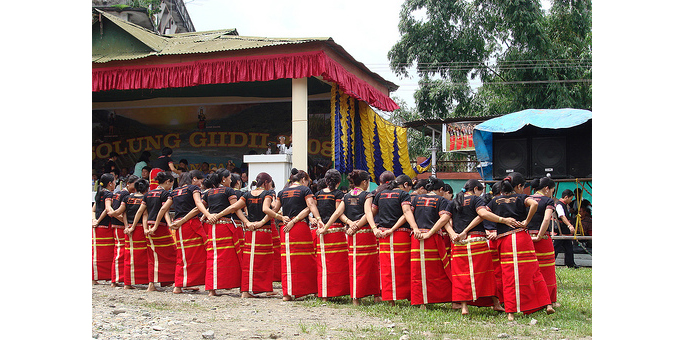
Solung is the most popular festival in Arunachal Pradesh that is celebrated by the Adis of on September 1 every year. It is an agro-based festival, but it also reflects the socio-religious features of the people. There are three main parts in the celebration of this festival, which includes Limir-Libom, the first part and the sacrificial day; Binnyat, the second part, the ritual offering to goddess of crops, Kine Nane; and Ekop (also called Taktor), the ritual made for protection against harms by evil spirits by appeasing to Gumin-Soyin, the household guardian, and Doying Bote, god of wisdom and human welfare.
Nyokum, Arunachal Pradesh
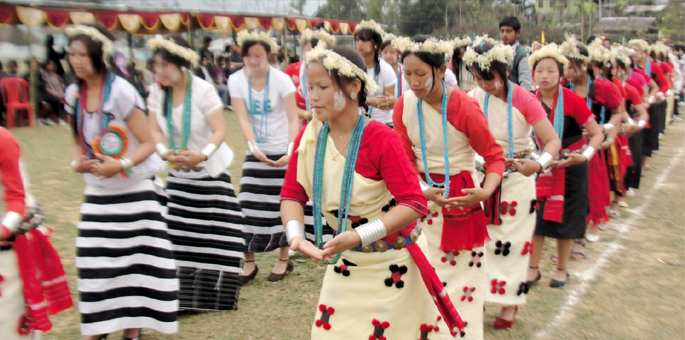
Nyokum Festival is another most prominent festival of Arunachal Pradesh. Celebrated by the Nyishi tribe of Arunachal Pradesh, Nyokum is a very colorful festival and reflects the interesting cultural heritage and ethnicity of the Nyishi tribe. Nyokum Festival is celebrated every year on 26th February with great zeal and spirit. And it has slowly become a symbol of unity, harmony, and ethnicity. The Nyokum Festival is usually celebrated in community grounds where people wearing traditional clothes gather, sing, and dance. During the festival, the head priest performs rituals and prayers are offered to the spirits to bring peace, harmony, and prosperity to the people. Men and women in traditional attire hold hands and forming a circle perform the traditional dance as they sing “Nyokum bo tapa debe”. Several competitions that foster the traditional art forms are organized during the festival.
Mopin, Arunachal Pradesh
The Mopin festival is an important festival of the Galo Adi tribe of Arunachal Pradesh which is celebrated in the month of lumi (April) every year. It is celebrated with much gaiety for wealth, good health and universal happiness. During the Mopin festival, smearing rice powder in each other faces marks the beginning of the festival and animal sacrifices are the ritual of the Mopin festival.
Nanda Devi Raj Jat, Uttarakhand
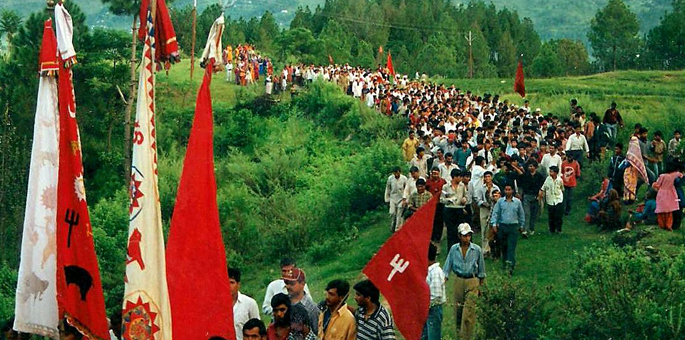
Known as the MAHAKHUMB of the Himalayas, one such once in a life time experience is the Nanda Devi Raj Jat Yatra. Nanda Devi Raj jat is celebrated once every 12 years – the journey starts from Nauti village and is accompany by a mystical four-horned sheep and Doli. The legend of the Nanda Devi Raj Jat is an important event from a spritual point of view as the shrines of Nanda Devi are scattered all over the Central Himalayas.
Phool Dei, Uttarakhand
Phool Dei is celebrated on the first day of the month of Chaitra in mid-March. On this day, young girls conduct most of the ceremonies. In some places, this festival is celebrated throughout the month with the advent of spring. During this festival young girls go to all the houses in the muhalla or the village with plates full of rice, jaggery, coconut, green leaves and flowers. They offer their good wishes for the prosperity of the household and are given blessings and presents (sweets, gur, money etc) in return.
Published: 25 Jul, 2014
Brought up from the cultural capital of India, Kolkata, Swairik Das is a passionate traveller who seeks to travel and explore the length and breadth of the country. He is also a dedicated travel writer, blogger and photographer who by heart is also an adventure freak. His focus is mostly into exploring and writing on trekking, jungle safaris and several adventure activities; religion, festival, heritage, people and cuisine.



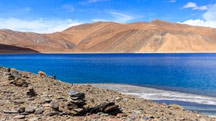 8 Nights / 9 Days
8 Nights / 9 Days 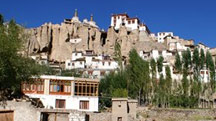 6 Nights / 7 Days
6 Nights / 7 Days 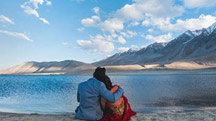 5 Nights / 6 Days
5 Nights / 6 Days 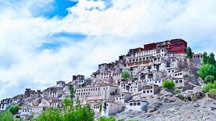 8 Nights / 6 Days
8 Nights / 6 Days 



















